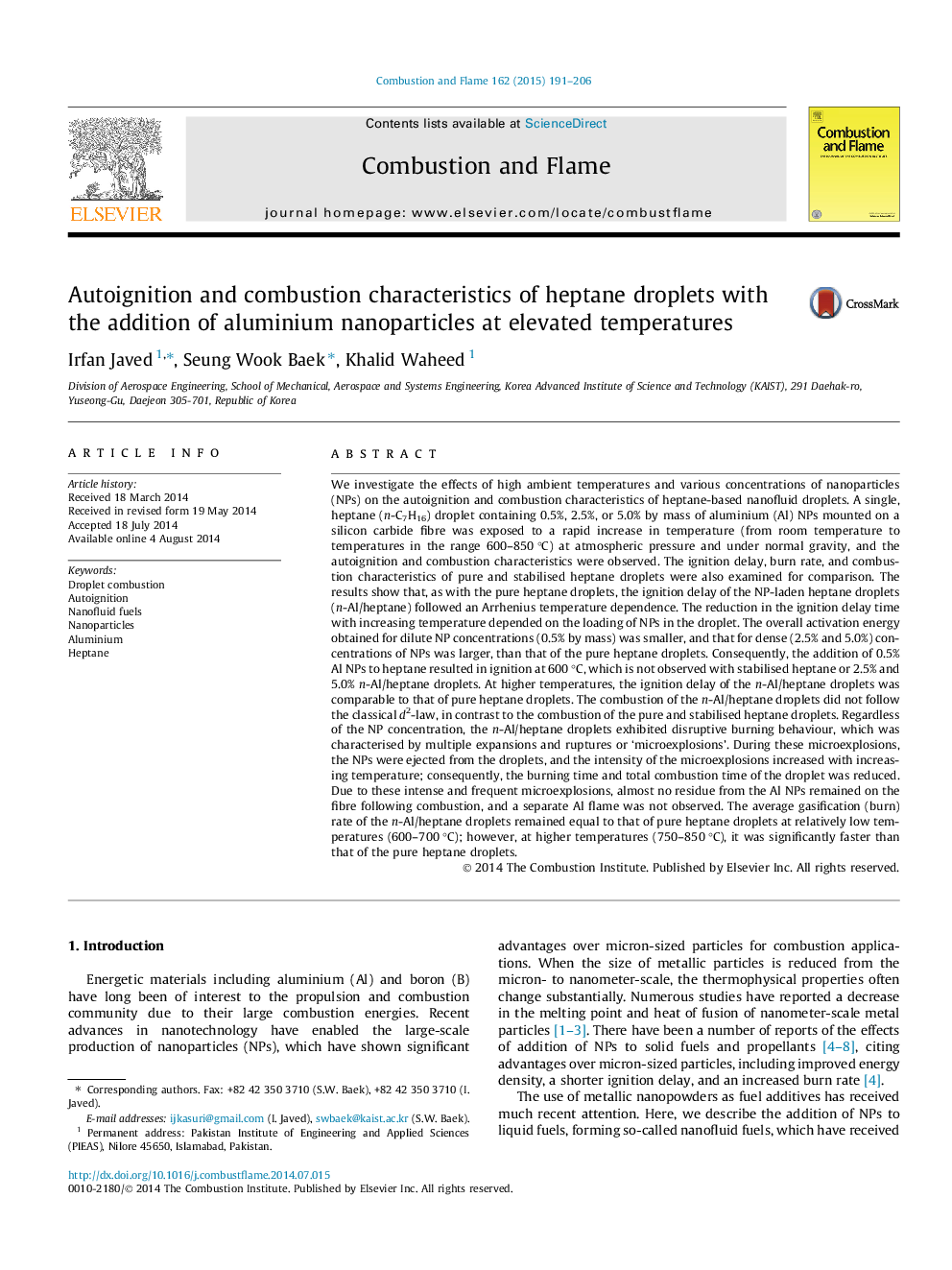| کد مقاله | کد نشریه | سال انتشار | مقاله انگلیسی | نسخه تمام متن |
|---|---|---|---|---|
| 166358 | 457760 | 2015 | 16 صفحه PDF | دانلود رایگان |
We investigate the effects of high ambient temperatures and various concentrations of nanoparticles (NPs) on the autoignition and combustion characteristics of heptane-based nanofluid droplets. A single, heptane (n-C7H16) droplet containing 0.5%, 2.5%, or 5.0% by mass of aluminium (Al) NPs mounted on a silicon carbide fibre was exposed to a rapid increase in temperature (from room temperature to temperatures in the range 600–850 °C) at atmospheric pressure and under normal gravity, and the autoignition and combustion characteristics were observed. The ignition delay, burn rate, and combustion characteristics of pure and stabilised heptane droplets were also examined for comparison. The results show that, as with the pure heptane droplets, the ignition delay of the NP-laden heptane droplets (n-Al/heptane) followed an Arrhenius temperature dependence. The reduction in the ignition delay time with increasing temperature depended on the loading of NPs in the droplet. The overall activation energy obtained for dilute NP concentrations (0.5% by mass) was smaller, and that for dense (2.5% and 5.0%) concentrations of NPs was larger, than that of the pure heptane droplets. Consequently, the addition of 0.5% Al NPs to heptane resulted in ignition at 600 °C, which is not observed with stabilised heptane or 2.5% and 5.0% n-Al/heptane droplets. At higher temperatures, the ignition delay of the n-Al/heptane droplets was comparable to that of pure heptane droplets. The combustion of the n-Al/heptane droplets did not follow the classical d2-law, in contrast to the combustion of the pure and stabilised heptane droplets. Regardless of the NP concentration, the n-Al/heptane droplets exhibited disruptive burning behaviour, which was characterised by multiple expansions and ruptures or ‘microexplosions’. During these microexplosions, the NPs were ejected from the droplets, and the intensity of the microexplosions increased with increasing temperature; consequently, the burning time and total combustion time of the droplet was reduced. Due to these intense and frequent microexplosions, almost no residue from the Al NPs remained on the fibre following combustion, and a separate Al flame was not observed. The average gasification (burn) rate of the n-Al/heptane droplets remained equal to that of pure heptane droplets at relatively low temperatures (600–700 °C); however, at higher temperatures (750–850 °C), it was significantly faster than that of the pure heptane droplets.
Journal: Combustion and Flame - Volume 162, Issue 1, January 2015, Pages 191–206
